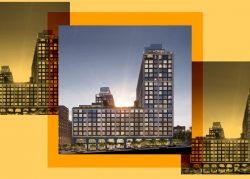Believe the homebuying hype: Brooklyn new development contracts this year smashed recent years’ totals with larger, more expensive homes leading the charge.
New development contracts in 2021 totaled $1.54 billion, a 150 percent increase from last year and 77 percent jump from 2019, according to a year-end report from Brown Harris Stevens Development Marketing (BHSDM).
This year, 898 new development contracts were signed. The average home signed was 1,220 square feet, a five-year high, and price-per-square-foot climbed to $1,680, up 43 percent year over year.
Activity slowed slightly in the fourth quarter, with just 188 contracts, compared to an average of 237 per quarter for the rest of the year. But demand remained robust, particularly for larger homes, as 22 percent of contracts were for units with three bedrooms or more.
“The high-end Brooklyn market also stood out, with record sales and cementing new luxury product expectations in an outer borough,” said Stephen Kliegerman, president of BHSDM.
Read more


Homes worth $1-2 million made up 37 percent of contracts signed, making it the hottest sector in the borough. Demand outstripped supply in the category, as only 32 percent of marketed units were listed in that price range.
Another 13 percent of contracts signed in the fourth quarter were for homes worth between $3-4 million, a record in that sector for the borough. Four contracts broke the $6 million mark, also a quarterly record.
“The strength of the high end represents new price points for this market, demonstrating the growth of luxury new development product, not just townhomes, in the Brooklyn market,” said Robin Schneiderman, managing director of BHSDM.
Not all neighborhoods fared the same. Dumbo, Brooklyn Heights and Downtown Brooklyn posted 87 contracts in the fourth quarter, more than double the amount signed in the same time span last year. But contract activity declined in Prospect Heights, Park Slope, Flatbush and Prospect Park South.
While contract activity slowed in the fourth quarter, that drop is a response to insufficient supply, not demand, according to Laura Tomana, vice president of research and market analytics at BHSDM.
New development sales also stayed hot in Manhattan, where volume tripled year over year and broke pre-pandemic numbers by a wide margin.
